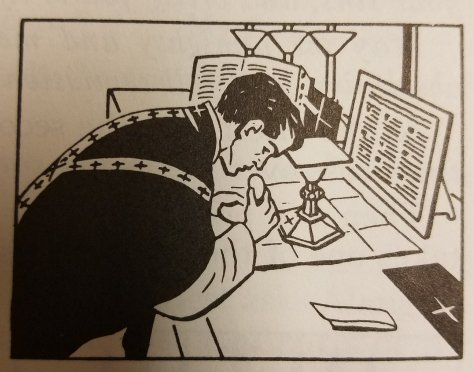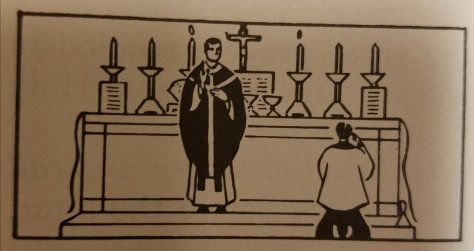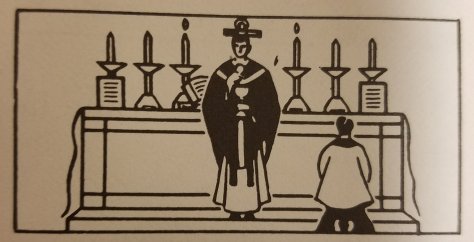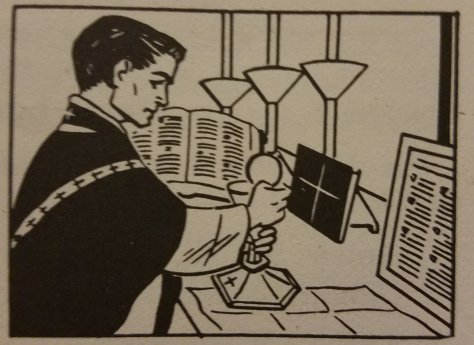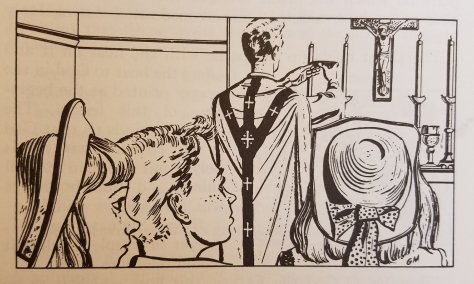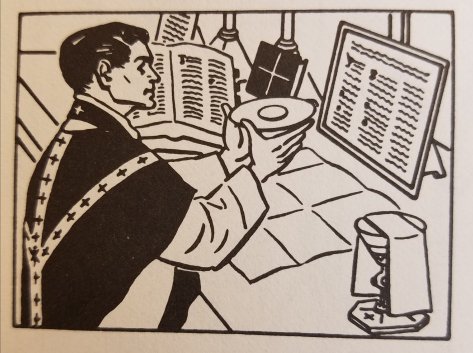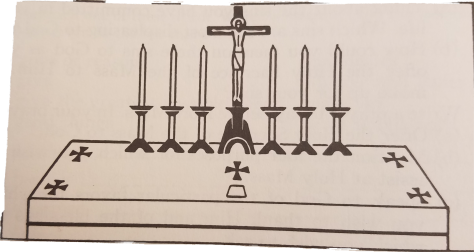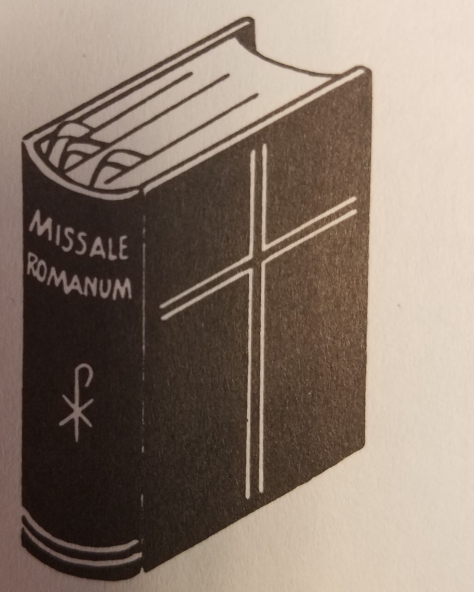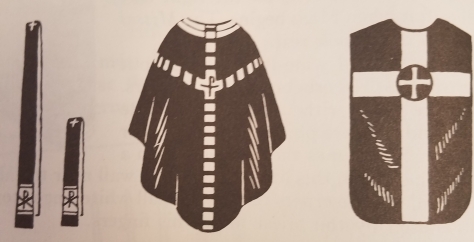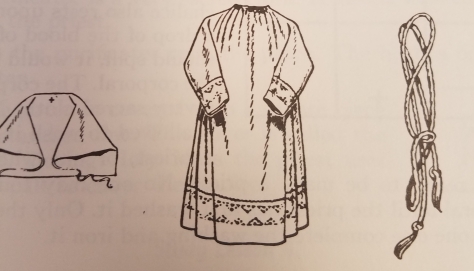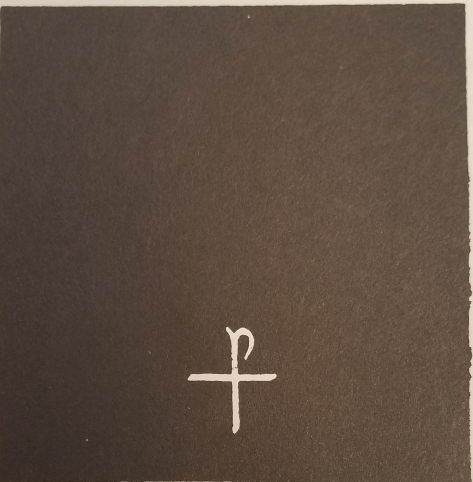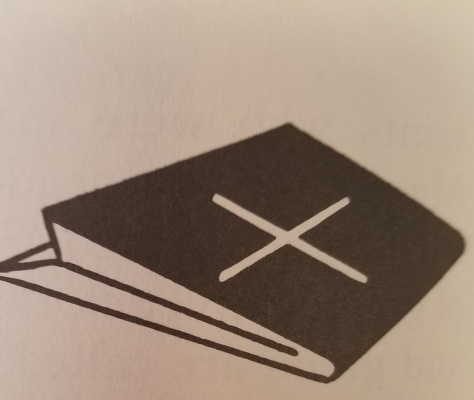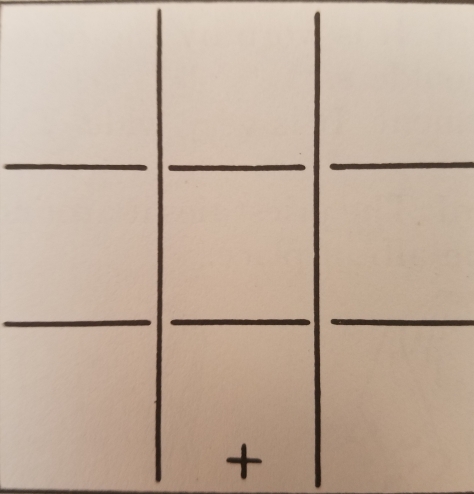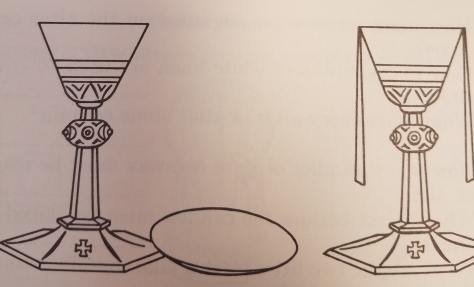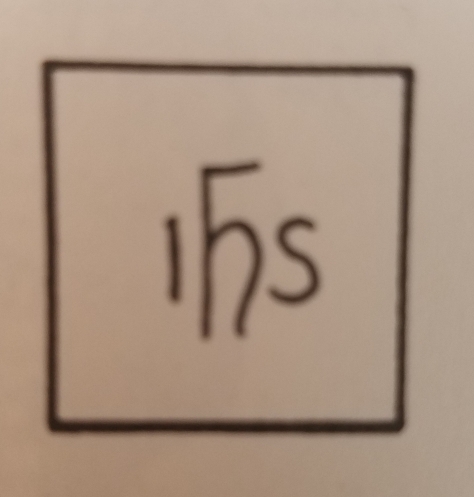The Priest’s Communion
After the priest has made the three prayers studied in the last lesson, it is almost time for him to recieve Holy Communion.
But first he says: I will take the Bread of heaven and call upon the name of the Lord. Then, bowing before the altar, he prays: Lord, I am not worthy that Thou shouldst enter under my roof, but only say the word and my soul will be healed. Three times the priest makes this prayer that begins Lord, I am not worthy… Each time he says it he strikes his breast. At this time the altar boy rings the bell three times.
The priest next says: May the Body of Our Lord Jesus Christ keep my soul unto life everlasting. Amen.
Then he recieves the Sacred Host. For a short time he thinks about the most Holy Sacrament.
Next, he prays:
What return shall I make to the Lord for all He hath given me? I will take the chalice of salvation, and I will call upon the name of the Lord. Praising, I will call upon the Lord, and I shall be saved from my enemies. May the Blood of Our Lord Jesus Christ keep my soul unto life everlasting. Amen.
After this prayer the priest receives the Precious Blood of Our Lord. Then he gives Holy Communion to the people.
The Communion of the Faithful
Almost immediately after the bell rings, the people go to the communion rail.
At this time, the Confiteor – I confess – is recited by the altar boy in the name of the people. This prayer tells God, our Blessed Mother, and the saints that we have committed sins. We speak of them because we are sorry we committed them.
The priest, after receiving the Precious Blood of Our Lord, genuflects and turns to the people. He says the last two parts of the Confiteor:
May almighty God have mercy upon you, forgive you your sins, and bring you to life everlasting.
May the almighty and merciful God grant you pardon, absolution, and full remission of your sins.
As the priest says the second part, he makes the Sign of the Cross over the people.
Then the priest turns to the altar and genuflects. He takes one of the small Hosts, holds it above the ciborium, and turns to the people again. He says in a voice they can hear:
Behold the Lamb of God, behold Him Who taketh away the sins of the world. And three times he says: Lord, I am not worthy that Thou shouldst come under my roof, but only say the word and my soul shall be healed.
St. John the Baptist first said: “Behold the Lamb of God; behold Him Who taketh away the sins of the world.” Our Lord, in the Holy Sacrifice of the Mass, continues to take away the sins of the world.
It was the centurion, during the life of Our Lord on earth, who went to Him and said: “I am not worthy to have You enter under my roof.” But the same centurion also said: “Only say the word, and my servant will be healed.” Our Lord was pleased with the faith of the centurion. He cured the servant by saying just a word. Knowing that Our Lord has power to cure and to forgive, we make the centurion’s prayer our prayer, as we get ready to recieve Holy Communion.
This is what the priest does as he gives Holy Communion to each person receiving. First, he blesses the person, making the Sign of the Cross with the Sacred Host. Then, as he places the Host on the tongue of the person, he says: May the Body of Our Lord Jesus Christ keep thy soul unto life everlasting. Amen.
Taken from The Kingdom of God series The Holy Sacrifice of the Mass by Ellamay Horan. I am not the Author merely the distributor. God Bless BJS!!

